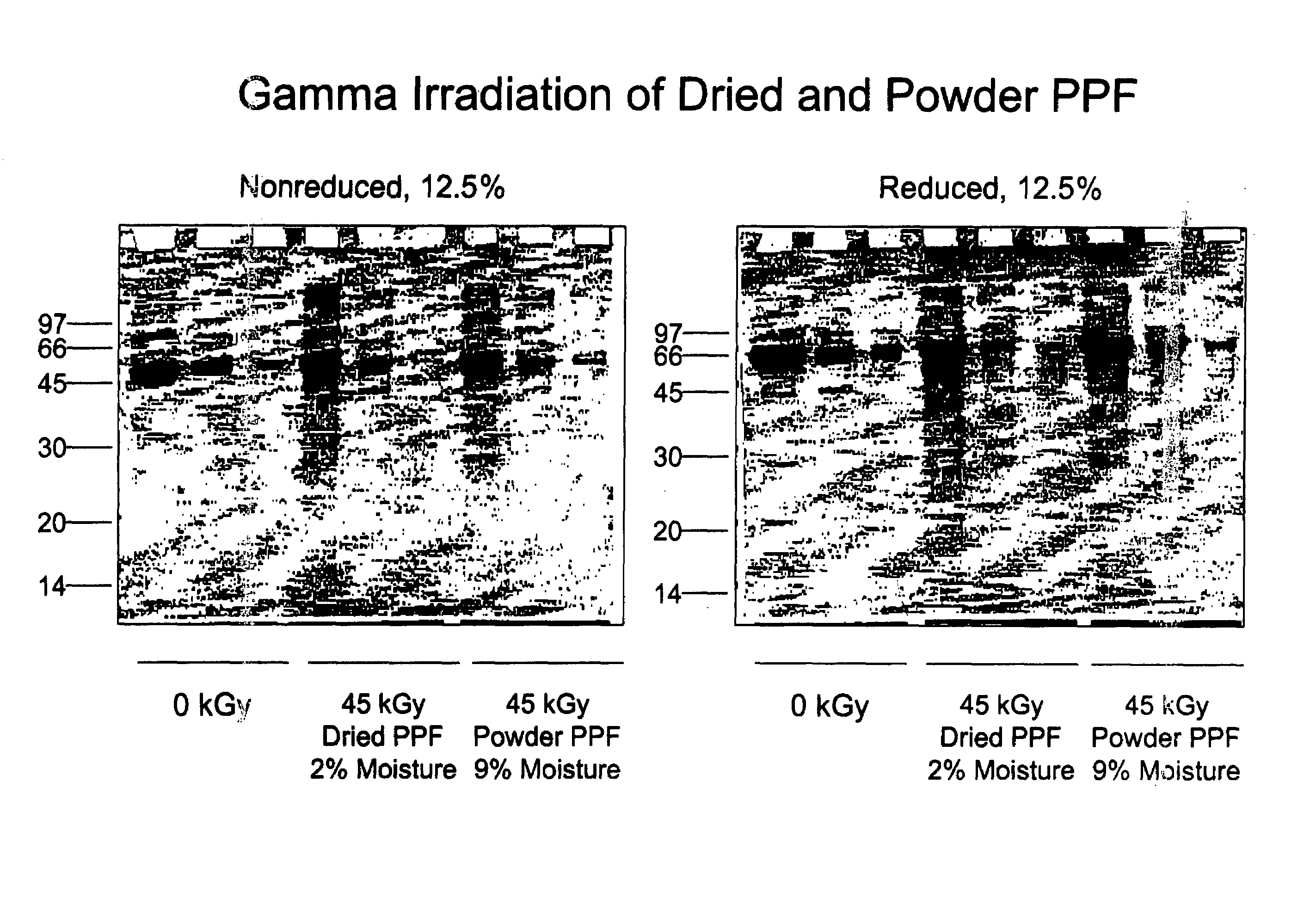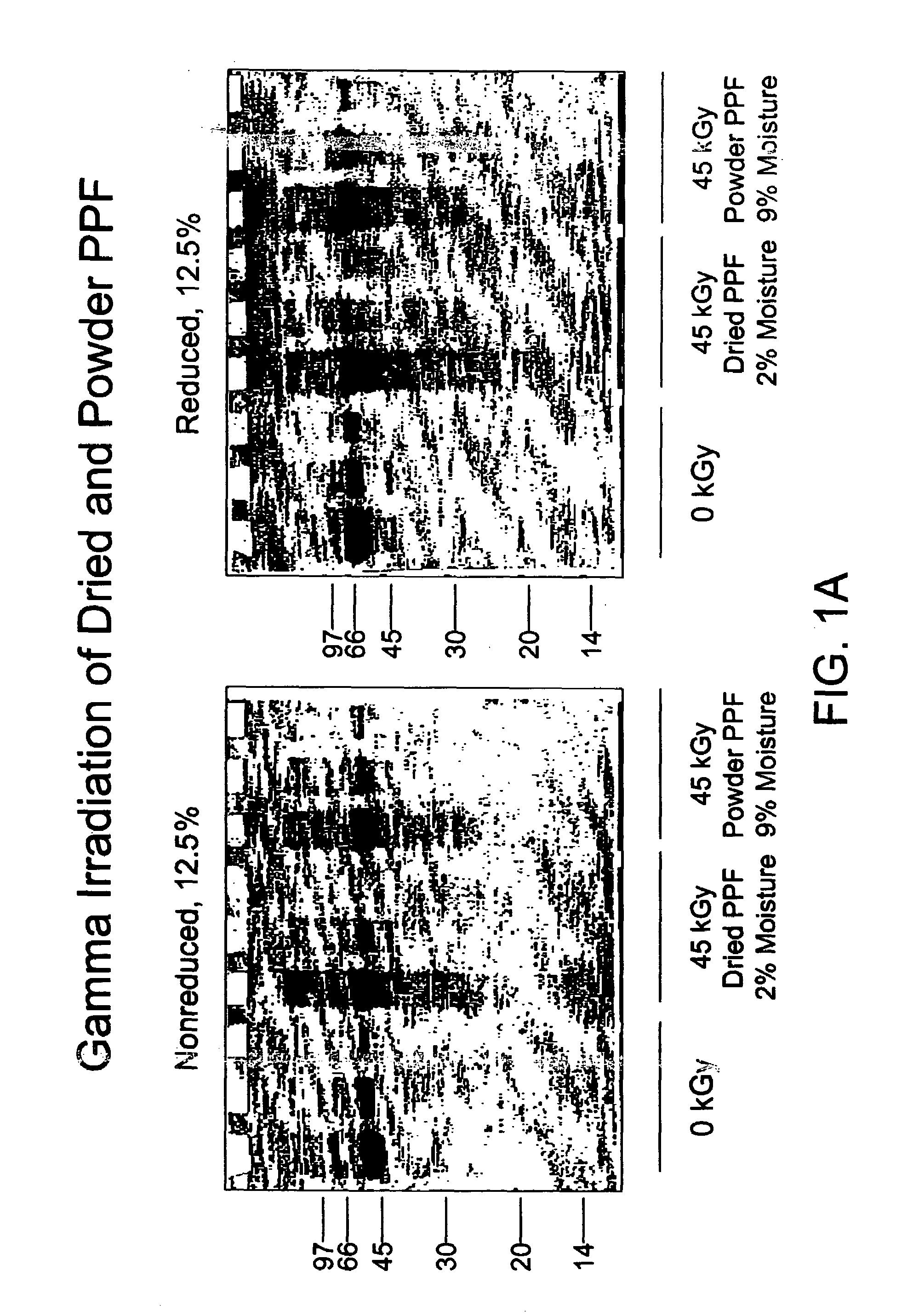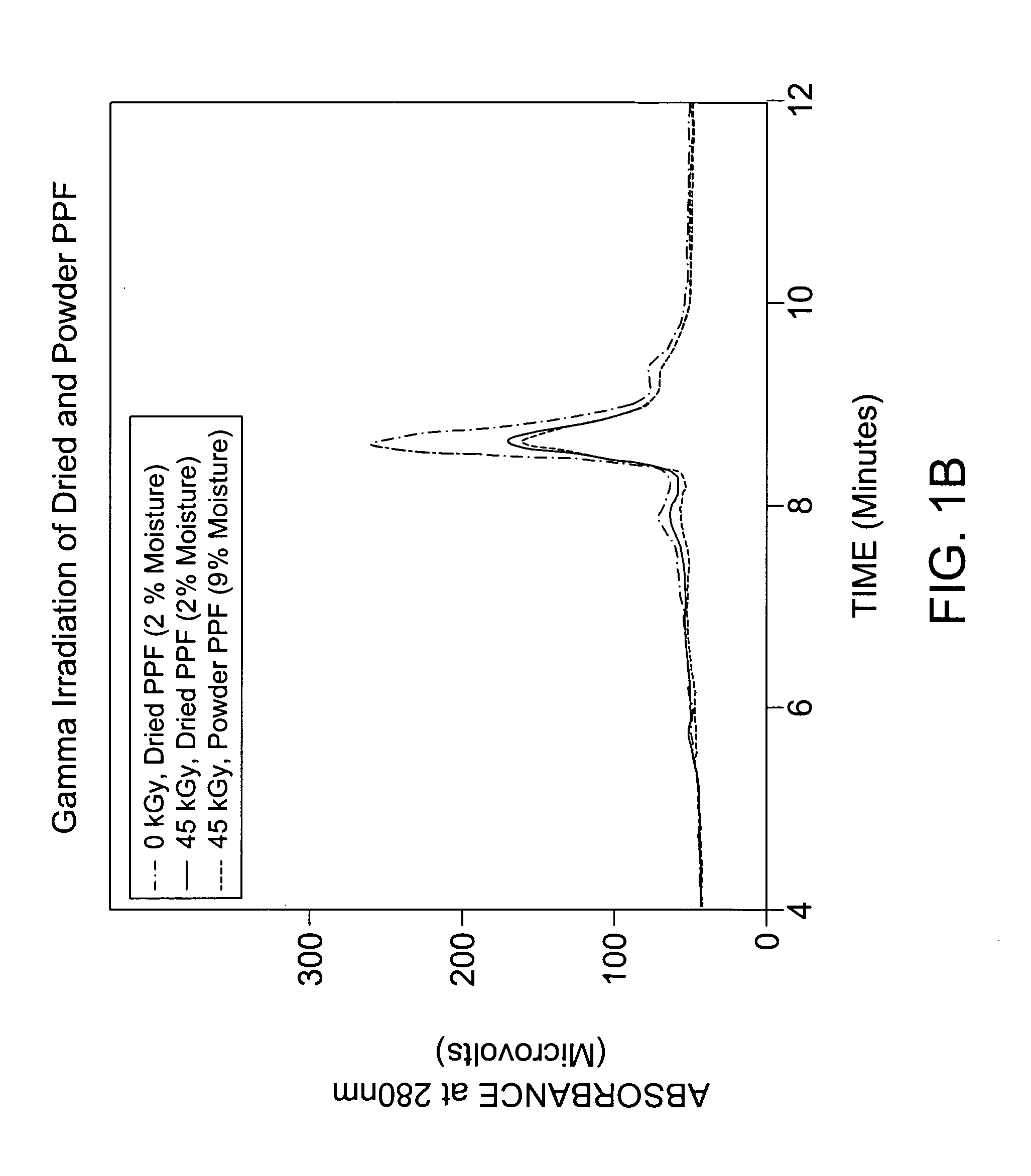Methods for sterilizing preparations containing albumin
a technology of albumin and preparation, which is applied in the direction of antibody medical ingredients, extracellular fluid disorder, therapy, etc., can solve the problems of not always reliable, inability to detect the presence of certain viruses, and unwanted and potentially dangerous biological contaminants or pathogens
- Summary
- Abstract
- Description
- Claims
- Application Information
AI Technical Summary
Benefits of technology
Problems solved by technology
Method used
Image
Examples
example 1
[0099]In this experiment, plasma protein fractions were irradiated (45 kGy at 1.9 kGy / hr at ambient temperature) at varying levels of residual solvent content and in the presence or absence of volatile stabilizers.
Method
[0100]In glass vials, samples of a commercially available plasma protein fraction (2 mg / ml) were prepared having either 9% water containing small amounts of ethanol and acetone or ˜1% water containing substantially no ethanol or acetone. Samples were irradiated with gamma radiation (45 kGy total dose at 1.9 kGy / hr and ambient temperature) and then assayed for structural integrity. Structural integrity was determined by SDS-PAGE, HPLSEC and reverse phase HPLC.
[0101]For SDS-PAGE, three 12.5% gels were prepared according to the following recipe: 4.2 ml acrylamide; 2.5 ml 4X-Tris (pH 8.8); 3.3 ml water; 100 μl 10% APS solution; and 10 μl TEMED, and placed in an electrophoresis unit with 1× Running Buffer (15.1 g Tris base; 72.0 g glycine; 5.0 g SDS in 1 l water, diluted ...
example 2
[0106]Human albumin (25%) was spiked 1:100 with 10% brain homogenate from hamster adapted scrapie (strain 263K). The sample was mixed by vortexing, and 4 6-ml aliquots of scrapie-spiked albumin were dispensed into 10-ml serum vials. One vial was stored at −80° C. as a frozen control. Three vials were taken to a commercial irradiation facility. One vial (the 0 kGy control) was refrigerated to prevent bacterial growth. The remaining vials were irradiated at ambient temperature (20–25° C.) at a rate of 0.4 kGy / hr to a total dose of 26 or 50 kGy. Radiation dose was assessed by dosimeters attached to each vial and by external dosimeters placed in close proximity to the vials. The irradiated samples and the 0 kGy control were assayed for scrapie infectivity.
[0107]Infectivity was assayed by intracerebral inoculation of 0.05 ml of sample into 12 hamsters, which were then held for up to 6 months for observation. Three clinical endpoints were assessed: wobble, failure-to-rear and death. There...
example 3
[0115]In the experiment, lyophilized albumin (containing 5% urokinase) was irradiated at a rate of 1.847 kGy / hr at approximately 4° C. to a total dose of 10 or 40 kGy.
[0116]Samples were analyzed by gel filtration using a TSKgel G4000SWxl 30 cm×7.8 mm column, separation range 20 kDa–7,000 kDa, elution buffer 0.1M sodium phosphate / 0.1M sodium sulfate (pH 6.5), flow rate 1 ml / min.
[0117]As shown in FIG. 3A, there was no change in the albumin when lyophilized and irradiated to either 10 kGy or 40 kGy total dose. In contrast, as shown in FIG. 3B, liquid albumin samples exhibited significant degradation when irradiated to 40 kGy total dose.
PUM
| Property | Measurement | Unit |
|---|---|---|
| Temperature | aaaaa | aaaaa |
| Temperature | aaaaa | aaaaa |
| Temperature | aaaaa | aaaaa |
Abstract
Description
Claims
Application Information
 Login to View More
Login to View More - R&D
- Intellectual Property
- Life Sciences
- Materials
- Tech Scout
- Unparalleled Data Quality
- Higher Quality Content
- 60% Fewer Hallucinations
Browse by: Latest US Patents, China's latest patents, Technical Efficacy Thesaurus, Application Domain, Technology Topic, Popular Technical Reports.
© 2025 PatSnap. All rights reserved.Legal|Privacy policy|Modern Slavery Act Transparency Statement|Sitemap|About US| Contact US: help@patsnap.com



